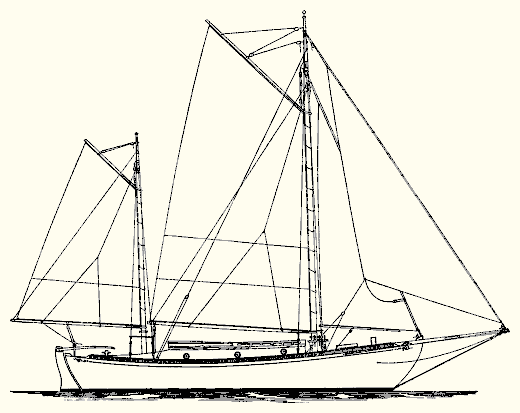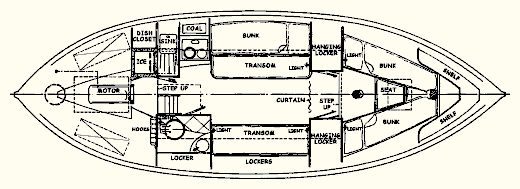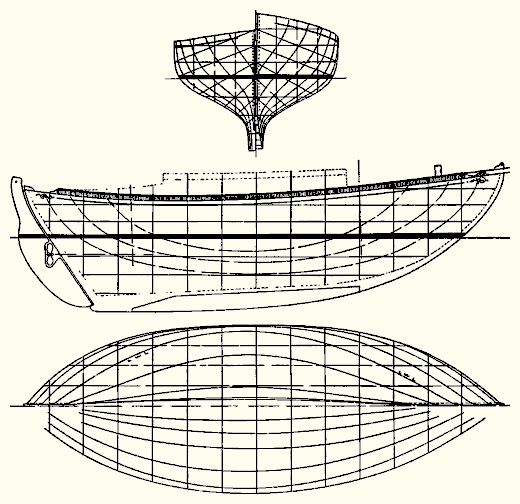

Eric is 32 feet, 1 inch in overall length; 27 feet, 6 inches on the water line; 11 feet in breadth, and 5 feet draft. Freeboard at the bow is 4 feet, 6 inches; amidships 2 feet, 3 3/4 inches, and at the stern 3 feet, 4 inches. The displacement is 19,500 pounds; ballast on keel 4,700 pounds; trimming ballast 1,200 pounds. Eric is not a type of boat for the beginner to tackle and any such should confine their efforts and labor to some of the simpler and more elementary designs which have been published previously, or which will follow later in this series.
The lines show a typical Colin Archer Norwegian lifeboat of the type used by the fishermen and pilots of the North Sea, but the rig and the arrangement of the deck and interior are after the manner of American practice.

There are two sail plans provided. The old time gaff-head sails, and a taller jib-head rig. If I were going off on deep water I should by all means retain the gaff rig. It is lower, more easily kept in order, less costly, and in beautiful keeping with the design of the hull. On the other hand if the boat will be used, as most boats are, on protected water the jib-head sail plan is an excellent choice. Theoretically the latter should be rather faster under sail. It will be noticed that the taller rig has a sail area of 726 square feet against 588 square feet for the gaff head rig.

The cabin is laid out for a party of four and has full 6-foot headroom throughout. The galley is in the after end of the deckhouse and contains an ice box of generous capacity, sink, Shipmate coal range, lockers, and all the equipment required for easy and happy living. The toilet room is opposite the galley, 3 feet, 4 inches long and nicely fitted out. The main cabin shows two transoms and built-in high bunk beneath which are drawers and lockers, big useful lockers, too. Notice one transom is 24 inches wide and is to be used as a berth, the opposite one being a sofa. It is interesting to observe that the distance between the transom fronts is a full 3 feet and that the floor width is the same. This is not a cabin in which one walks through a narrow gutter of a floor laid directly on the tops of the floor timbers. Two big hanging lockers supply storage space for clothes, and supplies. The forward stateroom is fitted with double built-in berths with open lockers beneath and built-in seat. With shelves fitted up under the clamps and the bow locker there is excellent room for stowing miscellaneous gear, etc.

The motor as is usual with most auxiliaries is installed under the cockpit floor and is readily accessible from the galley. I should not go in for too much power. A motor of approximately 180 cubic inch cylinder displacement is ample for a speed of 7 miles an hour.